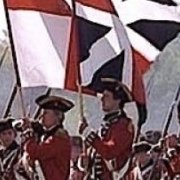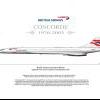Leaderboard
Popular Content
Showing content with the highest reputation on 26/05/18 in all areas
-
Morning folk's,finally pushed the Fulmar over the finish line,a fiver was the going rate from King Kit and as I'd built Airfix's boxing I knew what to expect,clunky in places nothing that can't be put right if you're that way inclined,this is OOB with the kit decal's built for the on-going Carrier's ahoy GB you can see how it goes together there,many thank's for taking the time to look.23 points
-
Oh my. Finally. This half-scratch turned out to be more than half, and at least twice as much as I wanted to work. Nevertheless, it is here now, even if it taxed quite a bit my little grey cells. If you would like to see the construction process, please go here to the post on Britmodeller: Thanks to all who contributed to make this model better, and specially to Mika Jernfors of Arctic Decals, always providing superb graphics for these exotic projects. OO-ENC was owned by Belgian pilot Guy Hansez and gained much notoriety due to some assiduous aerial meeting participation and some remarkable flights uniting France and Belgium with far places in Africa. With its vertical stabilizer painted on silver and the number 13 on it -and no wheel pants-, it was also seen participating in the Oases Meeting. This airframe was originally G-ACDD, the machine owned by certain British prince that later on played a very sad role in world history. So far, the story you can find in books and newspapers. But it is known by some that Hansez was actually flying his compatriot Hercule Poirot, in secret missions designed to catch the baddies.18 points
-
Morning folk's second build in the RAF GB was to mark it's entry into the jet age,Tamiya's kit has been around a while but still is a cracking build and a fare size to I can imagine those pilot's progressing from single engine fighter's getting a bit of a shock,anyway here she is and thank's for looking in.15 points
-
Thanks Adrian Sorry to hear your back's playing up - get well soon. In the meantime, get those kits ordered! Thanks John Always worth a visit, especially if you're at the RAF Museum. Thanks Stew - no need to apologise for a drift in my threads! Thanks Simon Feeling a little more human so on with the satin for the silver and a pre-transfers Klear coat for the camo: Of course that meant I could do this: Just need to fit the exhausts and that pesky transfer on the canopy. Not up to that at the moment!13 points
-
Hi all, Well at long last my journey with the Y-wing has come to an end. I give thanks for the help and encouragement I got from my buddies, especially Boz and Wally; they kept me plugging along and keeping to the right path for this beast. These final pictures illustrate how she came out. Not a perfect model but I'm really happy with the results. First up is a picture of the bottom; I find it at least as interesting as the top side. Next, here is a picture of the base. It is a simple box with the power plug and a switch in the back. You can see the top of the 1/8" RCA plug that the model connects to. Here she is from the right front. The base is picking up a little reflection from behind; it really is all over black! Now from the rear, showing off the vectrals. And finally the "money shot" showing off the lighting. That's all, folks! Many thanks to those of you who have commented, I appreciate all the kind words. May the Force be with you, always. Cheers, Yoda12 points
-
This is the old Hawk kit, in the Testors box with new decals. For a 1/48 kit it's pretty small. Detail is pretty much non existent, there is literally no interior to speak of except for a pilot figure holding a control column, but I have omitted him. The outline of the colour scheme is also engraved into the surface of the kit, so it's all been either masked and sprayed, or painted freehand. I knocked up a small base for it to sit on out of a picture frame and some floch.12 points
-
Hi, My latest finished - back to Spanish Civil War subjects. This is Martinsyde F4 Buzzard from San Javier - Murcia naval base in July-August 1936. The kit is a AZ one scratch converted to late variant with radiator moved from front of engine to bottom of fuselage. Decals from drawer and some hand painted. Buzzard was very obsolate ,achine in 1936 since it comes from end of WWI. This type was soon phased out from first line to training. Here she is: Comments welcome Regards Jerzy-Wojtek11 points
-
I do that too Pete, problem is (one of them) this isnt supposed to be a matt finish paint anyway I am using Sovereign Hobbies Colourcoats RAF Blue Grey which is, I understand a gloss finish It has come out matt because I am not getting a thin enough layer of colour down, mostly acos I am scared of getting runs all over like on the Buccaneers I cant win but tomorrow I intend having another bash at it Tonight though... Can you see what I see? Port wing inner section I have been giving the thick matt paint a workout Rescribing some of the missing and obliterated panel lines from stuff I did before Amongst the stuff that got obliterated is between two panel lines parallel to the mainspar There are some quite prominent row of rivets which on this side got wiped away in a frenzy of filing and sanding, hell knows why? Anyway call me minicrisp, I am trying one row of the HGW rivets in 0.15 at 0,8 pitch which look very much like the original Frog granted ones A closer look, the last four nearest the camera were straightened up after the photo was tooken by the way Unlike Crisp I intends giving the whole caboosh another very thin layer of paint, there's cracked paint skin to repair too, just in front of the bent line of rivets I will try removing the cover skin tomorrow, fingers crossed please chaps/folks/friends Other work goes on too The Palouste has had a coat of paint and some more work done The starter hose attachment point has been opened up and a hose coupler attached and the gauge panel has seen a touch of paint brush in an initial tidy up And the intake openings have been fitted with their wire mesh covers The wheel attachments now have their tiny little struts attached too and the hinged rear panel has bee engraved with microchiselled ribs and attached with superglue Hope that is enough for now, I am feeling like bed time beckons The back injury means I cant sit up all night (cant sit still for long either)11 points
-
This one nearly didn't make it and I seriously ran out of enthusiasm during this build. It's the Revell re-box of the ICM Messerchmitt 109F in 1/48 scale. The kit is fine, nice detail, good fit, apart from the nose which suffers from the same issues as the Spitfire from the same company (ICM) with an engine and separate nose cowling parts- it's a bit of a struggle to get it to sit nicely, and I just filled the be-jeezuzz out of the gaps, sanded and re-scribed. It's an OK-ish job, but not one that stands too much scrutiny. In line with EU regulations that similarly demand that all Typhoons are Closterman's and all MkIX's are Johnny Johnson's 🙂 as its a 109F Trop, The aircraft is finished in the markings of "Der Stern Von Afrika", (The Star of Africa), Hans Joachim Marseille. Marseille shot down a shedload (158) of British and Commonwealth fighters, mostly in North Africa. He was killed in September 1942 at the age of 23. Finished in Humbrol colours. Decals are fine but the kits sheet lack the swastika for legal reasons- I have a spare sheet of them somewhere but couldn't be bothered to put them on. I did enjoy parts of the build- the comparison to the engineering to my Hurricane, Spitfire and Tomahawk builds was interesting- the 109 seems very slender and compact in comparison , the wings slim and un-encumbered with blisters and bumps, the undercarriage is very stalky and spread eagled. Anyhoo, onto the next one- thanks for looking, Cheers, Troffa10 points
-
Hello mates! Hello Martin! This is my model of the member AF 59-0088 of the Competition William Tell 1972, built in November 1978 in 17 days from 4. to 20. (I had a lot of time in my college days and wrote this on the surviving instruction sheet). It comes with Microscale Decals. I dropped the drop tanks, i wanted a fast Dart! There is some ageing, i brushed it up and managed to add some damage to the metal at the rr hot end Cheers, Thomas10 points
-
Thanks Martian Yes, it was good to meet Bill and the trip around the RAF Museum was enhanced by the wise comments of you both. As posted elsewhere we also had a pilgrimage to Hannants: Has to be done! Great day and good to see you, as always. Hope you have a good trip back Bill Thanks Giorgio Very wise Heather - always good to check out the crowd first Thanks Håkan, easy to get a good finish with Colourcoats Thanks Johnny Go on, buy some more tools, you know you want to... Thanks Bill - all done before I read this, along with the too straight camo line on one wing Sorry John, too late, aileron 'corrected' Shame about the pool boy duty but it is fun messing about with pools eh? Mrs B's Uncle had an 'Octopus' thing that connected to the filter and shuffled across the bottom of the pool. Great thing. Thanks Tony The sanctuary is getting bigger and now I've gone and ordered Eduard's 'bargain' D-Day Dual Combo. Couldn't resist the discount. I'll have to make more space on the ceiling... No worries Giorgio, drift away... (now have images of those inflatable bed things in the pool) Thanks G, very kind Before I can apply the transfers I need to spray the red band - rats. It would have been MUCH easier to spray that first and mask it off before doing the rest of the painting. Too late now so some tricky masking was required: All went well, except some paint that pulled off the tailplane when I ripped of the tape: Ready for transfers now: .. but I'm not feeling up to it. We went to a friends for dinner last night and it was a late one. Badly hung over today - that'll teach me (although probably not...)10 points
-
Goal for this build was to build it in 4 weeks, straight from the box, just as per instructions: It's a nice model, to build and when build. 4 weeks was just enough, but it's good to see a model finished instead of dragging on...9 points
-
Hi Everyone, At last ! after several hours of Windows 10 updates, I`m able to show some pic`s of my effort: My latest attempt at Hasegawa`s 1/48 `E`version, Warhawk kit Completed to represent an aircraft of the 49th Fighter Group, `Skeeter`, flown by 2Lt John D Landers based at Darwin, Australia in 1942. I`ve been hooked on `49er` Warhawks since getting a book `Protect and Avenge` years ago and have been replacing my old Revell P-40 `49er collection with the Has` kit. Apart from the dodgy seat belts, aerial wires, brake pipes and the `bead` gun sight ( which went `ping` into another dimension somewhere ) the kit is built from what`s in the box The decals came from Microscale set: MS48-900, which are very bright and took a lot of toning down to look `right` Got an `N` and some more decals to do for the future Hope you enjoy, thanks for looking Cheers Russ9 points
-
'He's fallen in the water!', as Bruce Forsyth used to say to Rowan Atkinson on the Round the Horne, or something.... Ta Pete. Martians can multi-task you know.... Your cool clothing-related Banshee anecdotes outstrip my pathetic missed encounter any day. If I could used magnets to stop it shuffling off I wouldn't need the ointment. Too late. Don't tell him Pike. He could be working for the Emperor.... A quick Botox session this morning resulted in: Going around the various seams and openings of the last few day's gluings with Milliput. A cautious dollop across the hips back here to help later with blending the profile of the kit part neatly into the vacform: . From looking at photographs of Pelican 9 taken from the rear any irregularities in that region will leap out at the viewer if those curves aren't sensitively handled. In at the sides of the flap cut-outs too the Milliput went: To stop it falling out into the boom on the outboard side I had to CA some scrap plastic into place as a barrier: A quick close-up just to give you an idea of just how effective the epoxy is when used not just as an adhesive, but as a filler also: That excess should carve back nicely flush with a razor blade, and remain about as hard as dissolved runner would have been. What missile? Oh, that missile. Just there to keep the astrodome opening clear during Milliputting around it. Simples.9 points
-
No, my dad came over and fiddled with it while I referred to the servicing manual, but to no result. As it's from 1998, it's highly probable that the parts would need to be replaced entirely and at great expense. It makes me depressed every time I look at it. Today the temperature in Chicago skyrocketed from the low sixties Fahrenheit (about 16 C) to 92 F (33 C) with a cloudless blue sky. I had the day off (it's our Memorial Day on Monday, and if all goes according to plan, I'll again be putting a Union flag in front of the sole British soldier interred in the local military cemetery), and as I pushed Grant's stroller towards my parents' house for one of my periodic no sooner-there-than-regretted visits, I could've sworn I saw a dusty column of Foreign Legionnaires looking for an oasis. It's a scorcher out there, I'm trying to say, and yet another one of those periodic reminders that this part of the world is inimical to human life. I had hoped to more or less evade my parental responsibilities and leave the kids with my parents, but you can't kid a kidder, and it ended up with me carrying Winston around the block as he shouted "faster and faster" at me and black spots appeared at the periphery of my vision and crept inwards. I did manage to eke out an hour to go and get my hair cut after four months in which it had gradually reared up into a sort of unmanageable curly beehive, so that was good. To add insult to injury, Mrs P went out with one of my sisters and got drunk, but dangerously, not drunk enough to know she was drunk, and pedantically reiterated a conversation we'd already had that she couldn't remember. It took an hour of precious children-asleep time to untangle that puzzler, let me tell you. But you don't care about all that. So the interior decals are on. 20180525_231007 by Edward IX, on Flickr Don't worry about the exposed plastic on the floor part; I did, but the pedals will be PE bits added in the fullness of time, and a stick and some control rods should cover the other visible bare plastic. The decals are still drying right now, but I think the overall effect is pretty sweet, don't you? DON'T YOU? 20180525_230357 by Edward IX, on Flickr9 points
-
This is a mini WIP combined with an RFI, as I built this around 10 years ago, and some day I may get around to replacing the sand shields with some etched ones, but given the number of unfinished models that I have at the moment, that's not going to be any time soon. A Brief Intro. Operation Battleaxe was the first time that Crusaders were used in any significant numbers, and they didn't exactly cover themselves in glory. Thin armour, an ineffective main gun which couldn't fire HE and reliability problems were three of it's drawbacks. On the plus side, it was fast. I'd built Tamiya's 1/48th version of this, and decided to do the same in 1/35th, using the Italeri kit as a basis. Although the kit is for a Mk.l/ll, it didn't cover the version used in Battleaxe. There were some alterations needed, but nothing too drastic. First job was to add the prominent rivets along the sides of the lower hull. This early kit from Italeri omitted them, but the AA version included them. In all, there were approximately 300 rivets, but a day and a half saw the job done, and my sanity intact. I was going to finish this tank in the marking of 6 RTR, and their vehicles had different air filters to those supplied in the kit. They are a simple box shape and I made them from different thickness’s of card. The pipework leading from the filters to the engine deck was altered by removing the 90 degree bend and making new pipe from tubing. The track guards were also of a different configuration, so I cut away the kit part where it bends downwards, and made new track guards and glued them into place along with the new air boxes. Along the back of these Crusaders was a rack for 2 gallon POW cans. The rack was made from 10thou strip and filled with cans from Accurate Armour. The kit's right front track guard has a box shape on it which is for the spare tracks, but again, not applicable for this version, so it was removed with a chisel blade. A length of track was glued to the left track guard and a 10thou strip of card was added as a retaining bar. Turret. To my eye, the mantlet protrudes too far forward, so I sawed it in half, thinned it by about 4mm, and then reattached it and blended it in with Mr Surfacer. The main gun barrel was replaced with an aluminium one from Jordi Rubio. The searchlight was detailed with a bulb and lens and some etched bass from Eduard. On the other side there is a pot shaped item (it's purpose eludes me) which I made from a piece of dowel, fixed it to a square of card and glued in place on the side of the turret. There was no blanket box fitted to the rear of the turret, so a number of rivets had to be added along with a pistol port, new hatch bump stops and some detail to the aerial mount. Painting and weathering. I painted the tank in the Caunter scheme of Portland or Light Stone, Silver Grey and Light Grey. I mixed my colours from Tamiya paints using Mike Starmers mixes. Markings were minimal, being just the census numbers on the turret and rear hull. Weathering consisted mainly of chipping along exposed edges and dust courtesy of Mig's Beach Sand and Light Dust. The rest of the photos are RFI. I've included one of the original photos which I took years ago, to show what the colours should look like as the ones that I took recently give it a rather grey appearance. Sand Shields. As I said, I should replace these as they haven't lasted as well as I hoped. I cut them from thin card and scored the back so that they could be bent to shape. I glued thin rod into the groove to try and get it to keep the correct shape, but over the years, they have flattened out, hence the need for replacement with etched brass items. Thanks for looking. John.8 points
-
Enough beating around the bush. Time to start this project in earnest. I thought it might make sense to assemble the Revell wings. Of course, there was some preparatory work required, and I made the decision to attempt scribing the panel lines first. Scribing is a skill I'm still trying to feel comfortable with, but with suitable tools I followed the raised lines on the upper and lower wing parts. Once satisfied with the scribed lines, I sanded the raised ones off. Having scribed the wings, the fuselage and tailplane would also need doing, but that could wait. Rejigging the rear of the nacelles was next on the agenda. Hacking out the rear section that telescoped into the nacelle when the flaps were lowered left a rather large hole. While I cleaned things up, I pondered on how to deal with this. Not only would the nacelle need plugging, but the flap itself would need repairing. You can sense this will be coming back to bite me, but then I didn't expect this conversion to be an altogether easy one. In my usual "bodge it and see" way, I found some nice thick styrene sheet in my scrap box, which I formed into plugs that could be cemented into the nacelle. I had an idea that enough material filling the hole would allow for some carving and sanding to gain the shape of the nacelle on the Do17P series. What I failed to do, of course, was to check my stash of photos gleaned from the interweb for the actual shape I was trying to achieve. A bit later I had made plugs to fill the flaps as well as the nacelles. A smear of filler here and there, and some work with files and emery boards might just work. Well, perhaps not. The problem is the Do17Z nacelles - as someone has already pointed out up thread - are a bit fatter than the Do17P. I had failed to spot the shape of the nacelles, which come to a sharp knife edge, as well as being cut back to accommodate the flaps. I got the latter shape about right, but the knife edge was a step too far. To do the thinning properly I really needed to literally fill the entire rear of the nacelle to give me something I could shape. By the time I realised this, the original green plastic was disappearing into dust, leaving more holes I didn't want. Time to put this to one side to consider some alternative schemes. What's that saying about battle plans being worthless once contact has been made with the enemy? Yeah, that. I turned my attention to the fuselage. Very much of its time, there were the classic Airfix pimples all over the place. They were actually quite restrained, but nestled oddly among them were recessed panel lines. A very odd combination, neither fish nor fowl. I decided to select certain rows of pimples which had fine raised lines with them, and scribe those alone. All other raised detail was carefully sanded away. I also had a think about where the camera bay might have been located in the bomb bay, but how I work that feature out might be best left until the fuselage is glued together. Happy with the overall scribed work, I decided it might well be worth sorting out how the Revell wing assembly fitted on the Airfix fuselage. I marked a square line perpendicular to the flat wing roots, and carefully filed and sanded away until the Revell upper wing seated fair neatly. Something going right again. This won't last. There will be a requirement for some filling and sanding, but that isn't unexpected. There is a difference in the wing chord of both kits. The Revell wing is deeper than the Airfix one. I decided the easiest way to sort this out in due course will be to adjust the grafted wing to the fuselage, rather than the other way round. Other adjustments, such as a slight misalignment between the upper wing and fuselage, ought to disappear when things are glued in place. I got a little dispirited with the failed nacelle bodgery, I have to admit. I won't be touching the build again for a day, as we're off out to a big model railway bash on Sunday. An idea of how to sort the nacelles out is already forming, essentially chopping more of the nacelle away and creating a solid plug that can be sculpted to the right shape more easily. There's also an idea of cutting out the butchered flaps and replacing them with sheet material, but I need to let it all fester in the old noggin for a bit before I tackle any of that. The PE detail set is mainly aimed at the cockpit area, with some external fixtures and fittings. As the fuselage halves will need some careful sanding and alignment, this might turn interesting if I need to make up and fit most of the interior before I can make the joins neat. This whole thing might turn into a long-winded build that spends a deal of time on the shelf, and I may well end up kicking out several other more straightforward kits before before my FrankenDornier gets completed. I hope you don't get bored waiting!8 points
-
- With this kit I make an intrusion outside my favourite 48 scale but still Russian, or Soviet should I say ......At the openning of the box I've been seduced by what those nicely detailed and numerous parts and phot etched promised. Say a straight forward building.....How wrong I was,! I succeed to kill the beast at last but for sure it is not a kit for beginners..... - The photos you are going to see are a bit underexposed and blurred that's means that I don't use photoshop, I even don't know how to do..... - Let's begin with inside view https://imageshack.com/a/img922/4686/z4QH3r.jpg Now the beast......7 points
-
This is the S&M 1/72 Canberra B.2. Markings for 10 Sqn RAF mid 1950s just before taking part in the Suez Crisis. Main markings from Xtradecal sheet for Suez Aircraft. Aircraft stencilling from Modeldecal 26 as not on the Xtradecal sheet, and the kit sheet was wrong for the time period. Walkways were masked and painted. Overall not a bad build though it is not a shake and bake kit. Scheme is Medium Sea Grey & Light Slate Grey over PRU Blue (all xtracrylix paints) which I had never seen on an RAF Aircraft. My thanks to John Sheehan aka @canberra kid for his help answering questions, and providing information on the B.2s of 10 Sqn. Julien7 points
-
Thank you very much gents Dennis, it was this one. Alternatively you can add a little red to RAF Trainer Yellow. I added a watery brownish wash to the main gear bays to add a little depth to the detail and represent hydraulic fluid, dust and muck residue, and flooded the recessed cannon shell-and-link ejector ports with Citadel Nuln Oil black wash - if you are really eager you could drill these out so that they are actual slots but as far as I'm concerned if it's underneath I am not that likely to look at it again ... and I got the undercarriage units assembled; the door insides were painted Vallejo Metal Colour White Aluminium and the compression strut(?) was inked in with a Molotow Liquid Chrome pen to represent the unpainted stainless steel part of the gear legs: I also painted the inside of the inner gear doors White Aluminium and realised that I had not painted the little outer doors in hai ryuko shoku when I sprayed all the other underside bits; sometimes that's what happens when you aren't paying attention I will probably brush paint those rather than trouble myself to clean the airbrush after such a small job. Cheers, Stew7 points
-
Thanks John and John 'Pool boy duties'? Ahem... is that like in those films some may have seen? Time to mask the camo version. Easy for me, just 'print out' a 'type A scheme' template using the Portrait and we're off! Um, what's this? In my design I have the two different bits that go across the fuselage for different canopies labelled 'Normal' and 'Bubble'. Someone forgot to set the 'Bubble' to 'No Cut'. Someone is an idiot. I also found that the Mk 22 has a bigger empennage than other marks AND that the scheme varies a little on the rudder. Also, some lazy oik painted the whole of the ailerons. Nothing that couldn't be sorted with some tape: Into the booth with the Colourcoats, making sure the Ultramask hadn't lifted over the bumps before spraying: I think I made sure to spray away from the mask but I couldn't wait to see if I'd messed up: I love this paint. Just a bit here and here: ... although that bit near the starboard aileron was a masking fault. I'll soon get that touched up. You know how much I love a touch up (fnaar!) Must give the paint a chance to dry before I rip off the other masking but then it'll be a gloss coat and MORE transfers. Out to dinner tonight so hopefully in the morning.7 points
-
I've always liked this little plane. It is a natural link in the evolution of Polish fighters like P-11 or P-24, -) Many Polish designers worked on this Romanian fighters, becoused Romania produced P-24 fighters by the licences.6 points
-
Hi Folks, A few shots from Amari AB here in Estonia. The Swedish Air Force are currently using the base for a squadron of JAS-39C Gripens employed as 'Red Air/OPFOR' during Sweden's annual Air Defence exercise. In addition, the Army Air Corps have AW-159 Wildcats deployed to Estonia for four months as part of the NATO Enhanced Forward Presence initiative and the French Air Force are conducting the standing Baltic Air Policing mission with Dassault Mirage 2000s. The base is also home to the Estonian Air Force's fleet of aircraft including a 1956 vintage Antonov An-2, 3 Aero L-39C which are used for training fighter controllers and Robinson R-22 helicopters used in the liaison role. Hope you like them The Grand Old Lady of the Estonian Air Force - For those going to RIAT 18 this year, look out for this one - It's making the long trek across the Baltic Sea, Sweden and Denmark to attend the show at Fairford. Aero L-39C Estonian Air Force in a new low visibility grey scheme The Old and the New ! Additional shot of '41' showing underwing national marking6 points
-
Here is a recently completed entry for the Hawker (Siddeley) Group Build; Trumpeter's 1/48th Hawker Seahawk FGA.Mk.6 a beautiful aircraft IMHO. The kit is OK straight out of the box which is basically what I've done, a few scratched extra items in the cockpit plus a Pavla seat. There are some errors in the kit and some well documented mis-aligned panel lines and also some debatable shape issues, but overall an enjoyable build except for the decals, but then that's a situation normal for me. The build thread is here: Cheers thanks for looking.6 points
-
May 1984 and F-111E, s/n 68-0058, from the 3246th Test Wing out of Eglin AFB was visiting Test Ops at Edwards. I don't remember what they were there for, but I was able to finagle the back seat in an T-38 as a safety chase for one of their missions in the R-2508 operating area over the Mojave desert. Here she is on an earlier visit in 1982. Note she doesn't have any formation ("slime") lights and the reference marks on the rear fuselage are white on the green portion of the camouflage and red on the tan area. The 3246th tail band is white with a series of red-orange diamonds running across. 1984 and she has slime lights now. The reference marks on the left side are all red-orange (or is it orange-red?). At this time, the 3246th came under the Armament Division of AF Systems Command, hence the AD tail code. A few years later, Armament Division would become the Munitions Systems Division and the AD would change to ET for Eglin Test. Moving close aboard to check her over. Those orange fairings ahead of the cockpit on the sides and lower centerline house cameras to record weapons separations. Reference marks are two-toned on this side. Over the Boron mines. Separation cameras under the tail fairings as well. Power Approach configuration with everything hanging. Landing on Eddie's runway 22. We were in pretty good position to get the touchdown. I never liked carrying the zoom lens in the cockpit, so the 50mm had to do. Here she is in 1993, retired to the USAF Armament Museum outside of Eglin. Not sure why she has the AF Material Command shield on the tail, I thought she retired before Systems Command and Logistics Command merged to form Material Command. That's the 3246th Test Wing shield ahead of the star and bar. By the end of 1993, the USAF had got rid of most of the 4-digit unit designations and the 3246th became the 46th. Thanks for looking, Sven6 points
-
Dear fellow Britmodellers, here's my 1/72 Academy Hawker Tempest, built from the box. I used Print Scale decals (72-273) to represent an aircraft of 3. Squadron, based at Newchurch, England, in summer 1944. I did not like Print Scale's RAF Roundel colors, so these were replaced by products from Xtradecals. More info and period photographs on squadrons based at the Newchurch Advanced Landing Ground here: http://newchurchvillage.org/history/newchurch-ww2/squadron-photo-gallery/ The model was painted with Gunze acrylics. All photographs by Wolfgang Rabel of IGM Cars & Bikes. The 'Chipping effect' on the D-Day stripes was done with Vaseline creme: According to original photographs, 3rd sqaudron aircraft had a halo effect around the fuselage code letters. This was probably the result of the ground crew, hastily painting the D-Day stripes around the letters. I tried to replicate this effect with masks from Tamiya tape. These were cut slightly larger then the corresponding letters. To avoid the Black/White stripes shining through the Roundel, I masked these areas too. Exhaust stains airbrushed using Gunze H95 Smoke with a drop of H12 Black added: Thank you for your interest. Best greetings from Vienna, Roman6 points
-
Hi, just finished this and popped a few photo's in the Carrier Group build, here's the link Sit's well with my earlier build of the Kinetic 1/48 EA-6B with markings from the same sheet as the Growler.6 points
-
Morning folk's how much fun can you have for a fiver? Vista's Fulmar in Operation Torch colour's great little kit bit clunky in places but well worth a go.6 points
-
You have done a necessary and valuable thing. Two Spitfires saved from a life of non-painted misery now run free and colourful in the Ced Supermarine Sanctuary.6 points
-
well the next big hurdle is done, the paint job! Prepping for the top colours did require quite a bit of preparation which mostly involved the demarcation line. These varied greatly from aircraft to aircraft, from a near straight-line to a tight scalloped line, which mine had. Now how to do it, I originally thought I might be able to do it with BluTac sausages but it would be very hard to get it even, plus the demarcation line appears to have had a sharp edge (or near sharp), not something I could do nicely with BluTac. So it would have to be done with tape. To get the even scallops I made a mask out of plastic sheet then used that as a guide to cut out the mask. It was a long slow progress but it came out quite nicely, so now mask up the beast. The scallops could have been a bit finer but I’m happy with it. Next the main colours, Tan, Field Green, Dark Green in that order and freehand for a change. I really don’t knew if she had a hard edge or soft edge pattern, there was no info on it and the photo’s are not really clear. Having read that each scheme was different I decided to go with a slightly soft demarcation. I’m pretty happy with how it came out, a wee bit uneven which I wanted. It would have been a great help to have known how the sea air and exposure affected the finish? Next I need to mask of the nose radome and paint it gloss white, then add the scallop mask, a bit lower this time and then paint the top black. Then it’s just a case of glossing up the camouflage decal and panel line it before a flat topcoat. The wing leading edges also need to be done in clear-coated aluminum but this will be done right at the end. I never thought I’d say it but the end is insight! The only scary thing is how the demarcation line will look when the mask comes off!6 points
-
I can't say anything bad about this kit as I had no problems in putting it together and I even had the Eduard cockpit upgrade for it but instead of taking the canopy down for masking I glued it shut so I have included a couple of the cockpit while under construction.5 points
-
Camo - 516 Squadron VNAF. Trumpeter plus Eduard PE and resin weapons.5 points
-
Hiya Folks, While tidying up I came across this model which had been built in the early 1990`s while serving in the Army,....it had seen better says, it`s wings had been warped by exposure to direct sunshine over the years, it had missing propeller blades and was generally tired,..... but I didn`t want to reduce it to produce as the Herk has a special place in my heart,.... and I remember seeing this 25th Anniversary Herk out on the pan at Lyneham. So,.... I decided to spruce it up a bit, try to repair it and straighten the wings and then present it to my local Parachute Regiment Association,..... at our next meeting tonight! DSCF3344_NEW by Tony OToole, on Flickr DSCF3347 by Tony OToole, on Flickr DSCF3349_NEW by Tony OToole, on Flickr I intend to replace it with a new build model quite soon! Cheers Tony5 points
-
Kingkit have plenty, second-hand for £7.50 and new for £9.99, help yourselves lads Ced - apologies for spend drift Cheers, Stew5 points
-
Never ignore a pooh-pooh... 😮 I'm sure that @general melchett would agree, that one should never ignore a pooh-pooh! 🤔 Now that you have split the fuselage in half wouldn't it be possible to route a small channel along the inboard side on both halves between the cockpit and wing cutout, then insert a stiff something or other in there for added strength (sorta like the truss rod in a guitar neck) - thereby allowing you to deepen the cockpit area? Invisible when closed up. Now I'm not sure - but I think that this chap might be pooh-poohing me - saying I lack the courage to cut the cockpit to full depth! I'd better not ignore this least the pooh-pooh should spread... 🧐 Let's revisit the depth of that cockpit cutout! Here's where I started, note the thickness of wood left between the top of the wing root and the cockpit floor. Nearly 10mm - strong enough, for sure, but the cockpit has been intentionally left too shallow. After a bit more bandsaw work and some sanding as shown - we are left with... less than 4mm of wood between the top of wing root and the floor of the cockpit. It turns out that even 4mm of jarrah is sufficient to hold just fine. And the cockpit is now going to be full-depth! Ha - one pooh-pooh destroyed! 😀 Now to the next one... I would've liked to have seen a photo of the final wing contour against your template. Hmmmmmm… even more subtle this one. I suspect that this chap is saying that I have intentionally not shown the finished product against the template because the two don't match very well... Hence a pooh-pooh! 😨 Well - actually he would be dead right. I was hoping no-one would notice... Here's the current state of play with the aerofoil versus the template. There's still about a 1.5mm gap between the top of the wing and the template cut-out - so this is not great. There are various ways to fix this including, horror of horrors, adding a thin skin of balsa to the top of the wing and sanding that down to 'fill' the gap. Another option is to ignore the issue and live with thigs as they stand, which is, in effect, ignoring the pooh-pooh. In any case - I'm not going to fine tune this too much until I've sorted out the dihedral, which will probably be what the next post will cover. I suspect that getting the dihedral right is going to be very 'challenging' and think that there's going to be loads of opportunities for pooh-poohing! I for one am looking forward to it! Never ignore a pooh-pooh! - just encourage more of them... Steve5 points
-
Fortunately the transfers went on well. Not too bad for the elderly. Although there is a bit of film around them. I'll leave that overnight to bed in and see if they tone down. Also their matt and the paint finish is glossy, but some gloss varnish or Kleer should help that. The underside serials backing film is film is a bit yellowed but hopefully that may tone down with exposure to sunlight and a couple of coats of varnish. I should maybe have left the transfer sheet on the windowsill for a bit. Anyway let's see what happens by tomorrow.5 points
-
Good job it didn't go off, you'd have needed a ton more Milliput..... K5 points
-
The horizontal stabilizer is sanded down to erase the rib relief, that is angled incorrectly. New "ribs" are engraved. The angle of the root rib is changed to better fit the fuselage sides, avoiding the swept-back angle that the kit renders otherwise. The front knob, that was removed to alter said angle, is drilled and replaced with rod. Now ready for priming:5 points
-
Afternoon all. Managed some time recently, and got the tracks "nearly" done and on the running the gear. Looking to do a thin final panel lining wash on the tracks, and then a dust wash to blend them all together with the wheels and lower chassis. Final additions will be some Jerry can's on the side rack, arial and the figure. It arrived super quick from the seller of Ali-Express. £3.50 and here in week from China - can't complain at that service Overall I have learnt a lot in doing this one. After many years out of the hobby as such, and now finally getting to use new materials and products; I know better the sequence to do things etc. Maintaining an overall cohesive look as regards lower chassis, upper hull, wheels as regards mud etc etc and to next time try and do all at once rather than separately in sequence. I think I'll actually plan in detail where mud will go, chipping, dust accumulation as sometimes you cover up some very hard work and it never get's seen......😬 I aim to do a hard critique on this one, once done and keep some notes for the next in line on the windowsill. Anyway, here she is awaiting the "very" final touch's.5 points
-
The top wing is glued on, and the veneer applied. Some details are added to it:5 points
-
Hi guys, Finished this one up over the weekend, its Meng's Gepard SPAAG in the A2 configuration. The scheme is (supposedly) one used on a vehicle tested in Cyrpus. As such, it's weathered to show light wear with ingrained dirt covered by lots of dust. As anyone who has spent time in Cyprus will know, it doesn't rain that much and vehicles (at least civilian vehicles, I assume the same for military) don't tend to get washed that often. The kit went together beautifully, the only issue was the tracks. Each link is made up of 5 components, 4 track pads (inner and outer) and a link. The pads weren't too bad as they only had 1 connection point each (still 340 of them though!), but the links were incredibly fragile and had 5 connection points each! Anyway, on with the pics. Cheers, B4 points
-
Hi After a misty and damp start, the weather improved with unbroken sunshine, which presented the usual Duxford problems of shooting into the sun in the early part of the afternoon. These are the best of a very poor batch of images, but I thought that I would post them anyway. In no particular order. Thanks for looking.4 points
-
Good day, ladies and gentlemen! It's my next model.4 points
-
4 points
-
Here it is as of today. I finally gave up on the anti-skid after 4 different tries with all of the cleanup in between and having to repaint the black primer after the last mess. I guess anti-skid is just beyond me. It's either too thick or balls up into a mess with 4" scale balls or just looks terrible. I have the Meng Merkava Mk IV LIC on order and it has molded on anti-skid which is great. So I painted it overall with my normal IDF mix and some washes and eventually some dust and dirt to be added later. I see I broke off one of the dingle balls and chain on the turret with all of the handling and of course it promptly disappeared. My camera won't resolve all of the subtle tonal variations, it just gives a blurred rendering of the major color changes and that's too bad as it does look much better in real life. The last 2 pics are inside with my LED lighting and it does show more tonal variations, sort of. Oops, forgot to paint the stock on the loaders mg and the handle on the shovel. Next time.......4 points
-
Starting early with pool season, aren't you? If the weather stays good, I may be able to open mine on the first week of June - and BTW, nobody is even going to look at it till the water temperature goes beyond 26 centigrades... Sorry for the pool drift, Ced... Ciao4 points
-
I agree ( for what it's worth ) about the aileron, leave it as is. As for " pool boy " duties, I should be so lucky. It's just the annual job of opening it up, connecting all the filter and steriliser gubbins then brushing the bottom every couple of hours to send all the crap through the sand filter. It's all ready for use now,but I think SWMBO will require the temperature to rise a little ( 20C at the moment ) before she ventures in. Now, what did I do with all those unfinished aeroplanes. John4 points
-
And it's a catch up and a bucket of likes from me too. The term you were looking for is the fescalised portion of the oleo strut. Heretofore after to be known as 'the shiny bit'.4 points
-
Well I will be joining in but no idea what to do, that banner's got me thinking of Eduard's Gunbus which is an aircraft I've loved since building Revell's oldie many moons ago I've done a trench scene with Masterbox figure's which was great fun Even got arty-farty one evening as I sat looking out the window gave me an Idea!4 points
-
Right, pencils. Tonight I gave the sides a flat coat and then got to work with a grey Faber - Castell pencil. I am happy with the result but not happy with myself for rushing the second side. Side one. IMAG5247 by Mark Inman, on Flickr Side two. This side I felt was too much so I rubbed it back a bit with a cotton bud. This has left a sort of smudged effect which I'm not massively happy about. After looking at the pics I have gone back in with the pencil to make a few more stark again. IMAG5246 by Mark Inman, on Flickr Next will probably be a clear coat before decals.4 points
This leaderboard is set to London/GMT+01:00









.thumb.jpg.d17ff607fc7e89ed057e63fcb6f2a888.jpg)


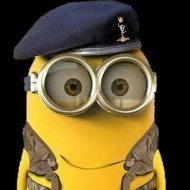

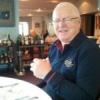



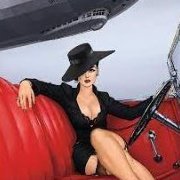

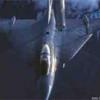

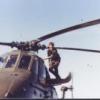


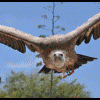


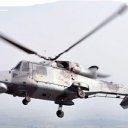
.thumb.jpg.76f12b87ce9ca9929c9aabdcf8f9d2dd.jpg)
